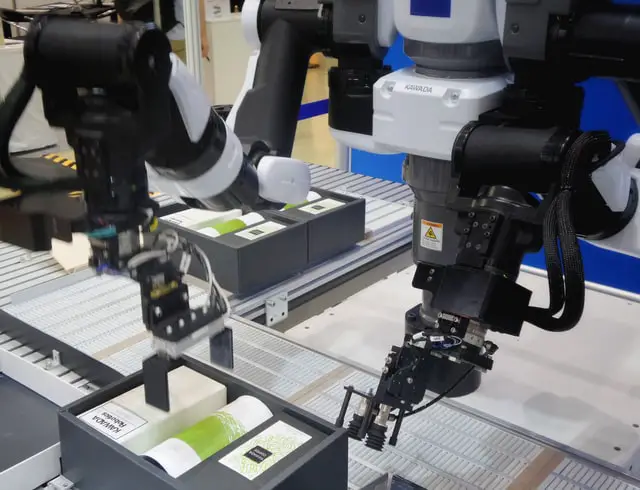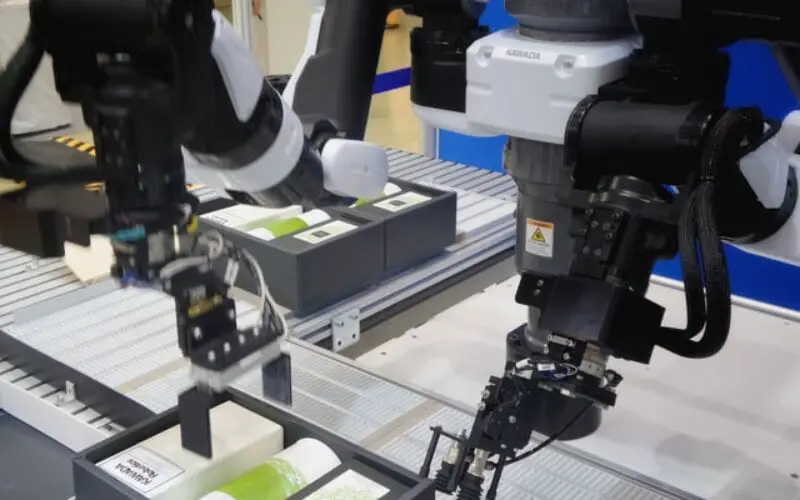Collaborative robots or cobots, rather are robots that are built to interact with human beings. These robots and manual operators share floor space and work in close proximity with each other. In contrast to traditional robots that execute major tasks, cobots are more reserved and carry out light duties.
Cobots are small industrial robots that make automation easier for small and medium-sized businesses. They carry out complex tasks, either autonomously or semi-autonomously. Cobots are used in several industrial applications such as assembly, packaging, loading/unloading, sorting, dispensing, and polishing.
Based on their promised and apparent advantages, collaborative robots are fascinating. As with any business, the equipment has to work according to the expectations. This review will focus on the merits and drawbacks of cobots and what makes them appealing to small and large businesses alike.

Advantages of Collaborative Robots
Collaborative Robots Do Not Replace Jobs
Collaborative robots are not designed to replace manual operators in a production line but rather work in close proximity with them. Collaborative robots will take it a notch higher and execute tasks that are considered strenous and impossible for humans to do.
Cobots can perform very complicated tasks that require high energy and skills that generally would cause stress injuries to the manual operators. Cobots are built to work with humans, so they blend into the production procedure and enhance it.
Compact Solution
Floor space in production facilities is normally at a premium. Collaborative robots have a small occupancy footprint in contrast to manual laborers who require more working space with regard to industrial health and safety standards.
Cobots are very compact and can even be moved by manual operators. Their small frames necessitates that some components such as cabling be routed through the wrist of the robot. Some collaborative robots are compact enough to be fixed inside the machine; thus do not occupy space.
Increase Efficiency Of Production
In a typical work environment an operator is supposed to load or unload parts into a machine or conveyor belt. The operator then exits the workspace and leaves the robot to execute tasks. In contrast when working with cobots, the operator can handover the part directly to the robot and never has to leave his workarea thus reducing time, cost, and floor space needed.
Quick & Easy Set-Up
Unlike traditional robots, which are extremely time and capital intensive and can only perform one action at a go, cobots require very little time and finances to program. Cobots run-through machine learning techniques and are able to learn actions via software and mobile applications.
Collaborative robots can also be set to the desired location by hand and save these specifications in their software platform. Stemming from its ease of programming, a collaborative robot can be implemented very fast in a procedure and direct it to perform a couple of tasks.
Drawbacks Of Collaborative Robots
Restricted Working Area
Collaborative robots may be in need of restricted working space to avoid inflicting injuries and health issues to manual operators. The cost of having extra floor space for the machine is expensive.
Production speed will be hampered, too, because any time the cobot senses danger to a manual operator, it goes into safety mode and shuts down.
Limited Speeds For Safety Compliant Cobots
Collaborative robots that have the power and force limiting approach in place.conform to safety standards that negate work-related injuries. This in turn limits their functionality. It reduces payload capability, accuracy, and speed.
Limited Power Capability
In comparison with other robots, such as the six-axis kind, collaborative robots are not as powerful. A cobot cannot give good results in instances where high speeds are required. This limits the application of cobots.
Conclusion
To sum it all up, cobots are handy machines in industries, and their impact cannot be overlooked. Any industry looking to employ cobots, should make sure that the cobot can match the payload requirements or rather invest in other robots.











